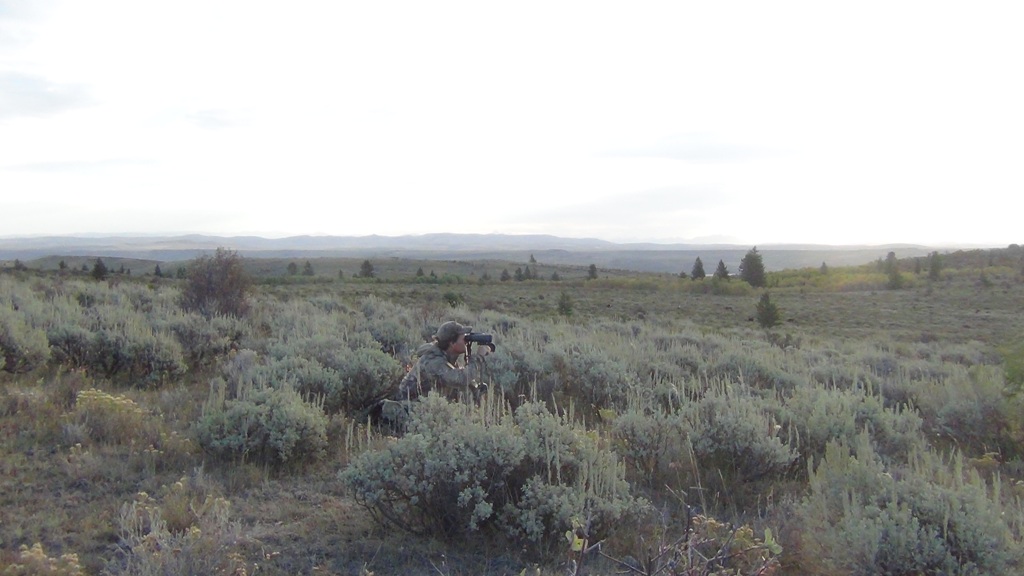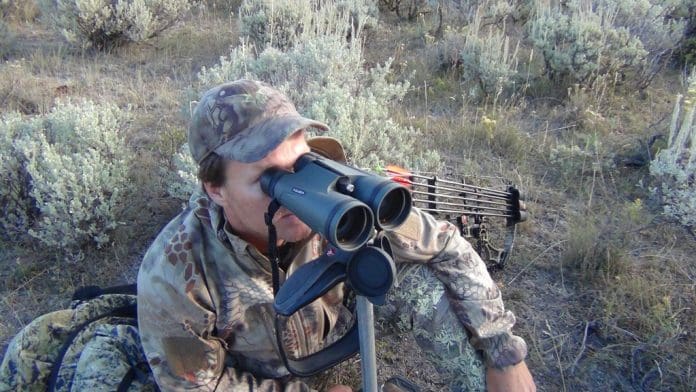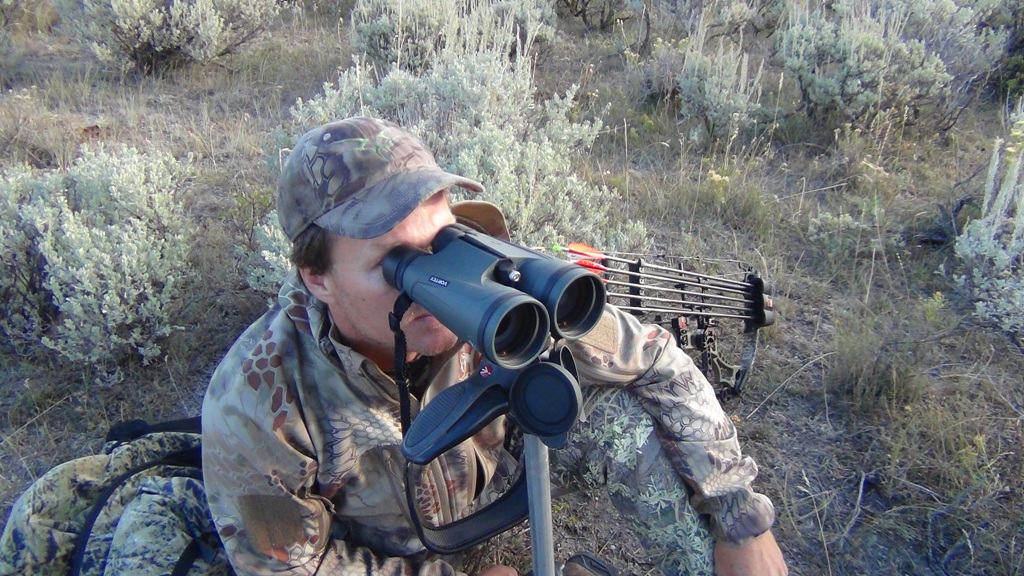
Vortex’s Kaibab HD 15×56 vs. Vortex Vulture HD 15×56
The Definitive Review
By Robby Denning, Rokslide Co-Owner
* Disclaimer: I’m not an optics expert. I’m a four-decades mule deer hunter. I can’t explain chromatic abberation or tell you exactly how resolution is related to objective diameter. However, I have glassed thousands of hours in my lifetime and I know what it takes to put big mule deer in the dirt. If you want to talk to an optics expert, click off this page. They’re out there, I’m just not one of them…
When I was kid growing up in the 1970’s, my dad was ahead of his time. While most hunters didn’t even carry binoculars back then, he usually had a pair close by. Taking it up a notch, he also owned and used a pair of 20x tripod-mounted binoculars— something almost unheard of back then. I can’t even remember the brand but I do remember that while they were barely tolerable to look through, I could glass better with them than with a spotting scope or the smaller 8x binos so common at the time. I could actually see bucks (under the right conditions) at four and even five miles. Those binoculars finally broke and I forgot about the concept for a few years.
 Then in my early twenties, I started reading about a guide on Arizona’s Kaibab Plateau by the name of Duwane Adams who used 15x binoculars to hunt mule deer. Those articles rekindled my fire and I soon purchased a pair of Pentax 16×50 tripod binoculars. While they weren’t that great, I used them for hours on end every summer and fall. I ended up killing by widest buck ever after spotting him at three-plus miles one October morning. I was hooked and rarely left them home, especially in the scouting season or early fall months when a guy can glass for hours without getting cold.
Then in my early twenties, I started reading about a guide on Arizona’s Kaibab Plateau by the name of Duwane Adams who used 15x binoculars to hunt mule deer. Those articles rekindled my fire and I soon purchased a pair of Pentax 16×50 tripod binoculars. While they weren’t that great, I used them for hours on end every summer and fall. I ended up killing by widest buck ever after spotting him at three-plus miles one October morning. I was hooked and rarely left them home, especially in the scouting season or early fall months when a guy can glass for hours without getting cold.
Then in 2012, I started hearing about Vortex’s appropriately named Kaibab HD 15×56 tripod binocular. I hadn’t ever looked through a pair, but I’d been around several Vortex spotters and lower power binoculars and suspected the Kaibabs would do the job just fine.
As luck would have it, Vortex became a Rokslide sponsor and needed someone to test their 2014 release in their tripod-mounted binocular line, the Vulture HD 15×56 tripod binocular. The Vulture is a less-expensive design of the Kaibab that gives those with less discretionary income a chance to get into the world of high-power tripod-binocuars. I had mule deer tags for Idaho’s archery and Colorado’s September muzzleloader seasons—prime times to test a big binocular—so I offered my help.
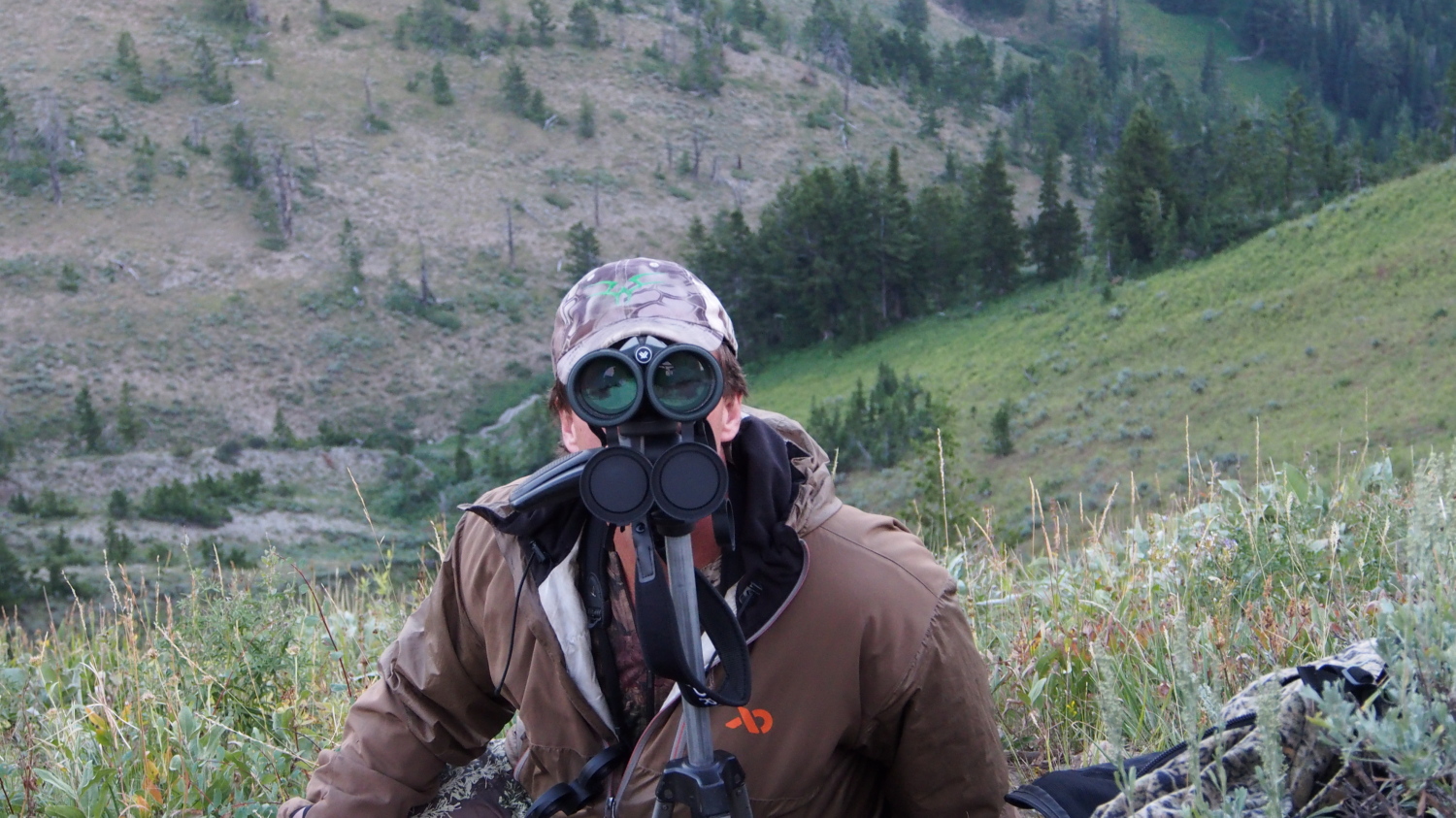
Mark Boardman, Vortex’s Marketing Manager and a fellow mule deer hunter, made sure the Vulture’s were on my doorstep in plenty of time for the scouting season. My job was to test them and we also agreed to run a promotion where one Rokslide member could win the Vultures after my testing was done.
Vulture HD 15×56 Use & Testing
My first experience with the new 15x56s came just an evening later in the backyard of my sister’s home near Bozeman, Montana. The Bridger Mountains form the northeastern backdrop of her yard and I glassed the ridges and gullys as the sun set behind me. At first, I thought the Vultures weren’t clear but within a few minutes I figured out they just required a fine touch to focus correctly. Once I was able to dial-in, I was pretty pleased with their clarity.
After the sun was down about 20 minutes, the Vultures really shined as their brightness became apparent. In clear conditions, the big 56mm objective lens allowed me to glass out to several miles within about 10 minutes of last legal shooting light, and to a mile a full 31 minutes beyond official sunset. I could go even longer as I reduced the distance to a few hundred yards.
Archery season was soon upon me. I’d found a really good Idaho buck (I named him Jalepeno because he was hot!) on an OTC tag the previous year. He was back for 2014. I packed a camp in three miles, complete with my new Vultures, and set to glassing the day before the season. I learned that the Vultures were sensitive to distance changes more than my smaller optics, which makes sense. So if I was switching from glassing country at three miles away to country at a mile, I’d need to fine-tune the focus. Once I did, I was back in the game.
I found that old buck several times using the Vultures when I couldn’t find him through my 8x Swarovski ELs. This wasn’t because of clarity, but simply the jump in power. The eye relief was good enough but I did find that setting the interpupillary distance (the measurement between the ocular lens) was critical to get a full viewing circle in the optic.
These adjustments took some time getting used to, but once I did, I really enjoyed them. I never killed Jalepeno but continued using the Vultures well into October in a variety of weather and lighting conditions, racking up over 20 days behind them. They performed well. We ran a contest on Rokslide and I ended up giving the Vultures away to a member. As of press time, I never heard his final thoughts on them.
*UPDATE*
The member who won the Vultures contacted me after this review was published and offered his thoughts and experiences after using them for over a year. You can read his very insightful post here (see post #15 by Chad E.)

Enter Kaibab HD 15×56
In 2015, I was able to finally try a pair of the Kaibab HD 15x56s. Again, Mark had them on my doorstep in plenty of time for scouting season and I was soon back on the same desert mountain range where I’d found Jalepeno. I spent over a week between July and August looking for him and put at least 6-10 hours on the Kaibabs during that time. They were good and as it is in all glass, incrementally better than the Vultures but at a much higher cost. The Vulture’s can be had for around $500 while the Kaibabs go well north of a grand.
While I didn’t get to test them side-by-side, I used both enough to know the differences as detailed below.
Overall Clarity
When focused right, the Vultures score a B and the Kaibabs a B+. In my subjective opinion, to get to an A, you’d need to spend nearly twice what the Kaibabs cost. With either Vortex model, you can spot virtually every buck you could with higher priced optics. The difference will be in examing very fine details in terrain or antlers, but it will be a small (and expensive) difference.
Ease of Focus:
While not included in all optics reviews, I think ease-of-focus needs mentioning as it impacts your glassing sessions to some degree. The Kaibabs just seemed to be less finicky to put in focus and then stay there over a wider distance range. I’d give the Kaibabs an A and the Vultures a B.
Interpupillary Distance:
Vortex lists the Kaibabs at 60-76mm and the Vultures at 59-74mm. It seemed that a little change made more difference in the Vultures and that I had to set them close to their maximum distance to keep a full glassable circle. Again, not a deal breaker, but the Kaibabs were easier. Vortex sells a Binoc-Loc designed to lock your interpupillary distance in. This might be a good investment if you buy the Vultures.
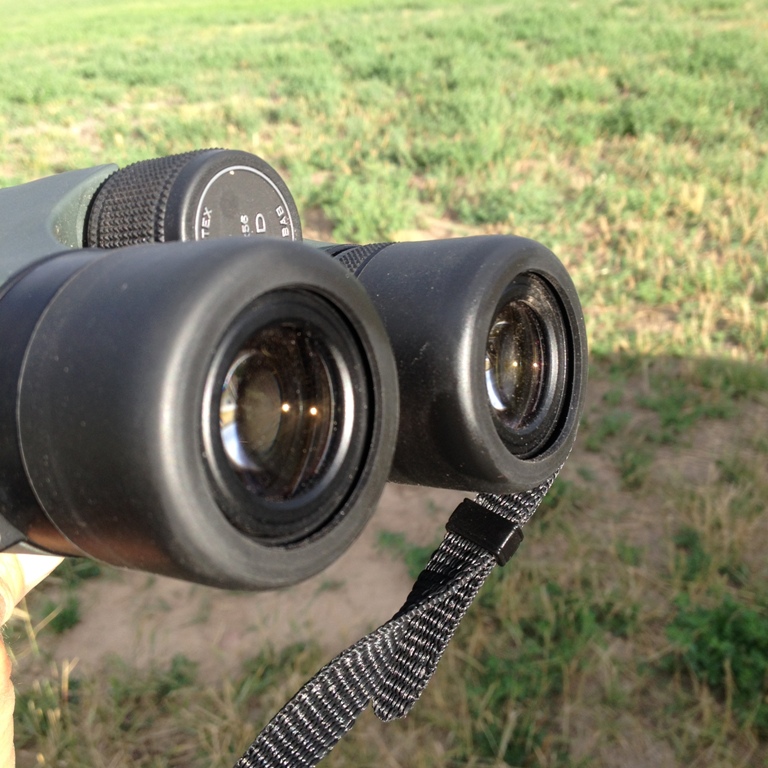
The Kaibabs had an edge over the Vultures in interpupillary distance, which showed up in actual field testing. The Kaibabs greater range meant they were easier to maintain a full circle in the field of view without “black out”, but not by a big margin
Field of View
This is where a side-by-side test would have been most helpful. Vortex lists FOV at 1000 yards for the Kaibabs at 215′ / 4.1° while Vultures punch the clock at 226′ / 4.3°. I’d bet you couldn’t tell the difference in a side-by-side test. What matters most is that the FOV in both optics was very good. If you’re using tripod-mounted binoculars correctly, you’ll pick up a lot of bucks out to the edge of the optics so a big FOV is critical and both optics delivered.
Edge-to-Edge Clarity
To take full advantage of FOV, edge-to-edge clarity is important. Again, the Kaibabs beat the Vultures and again, not by much. I’d give the Kaibabs a B+ and the Vultures a B.
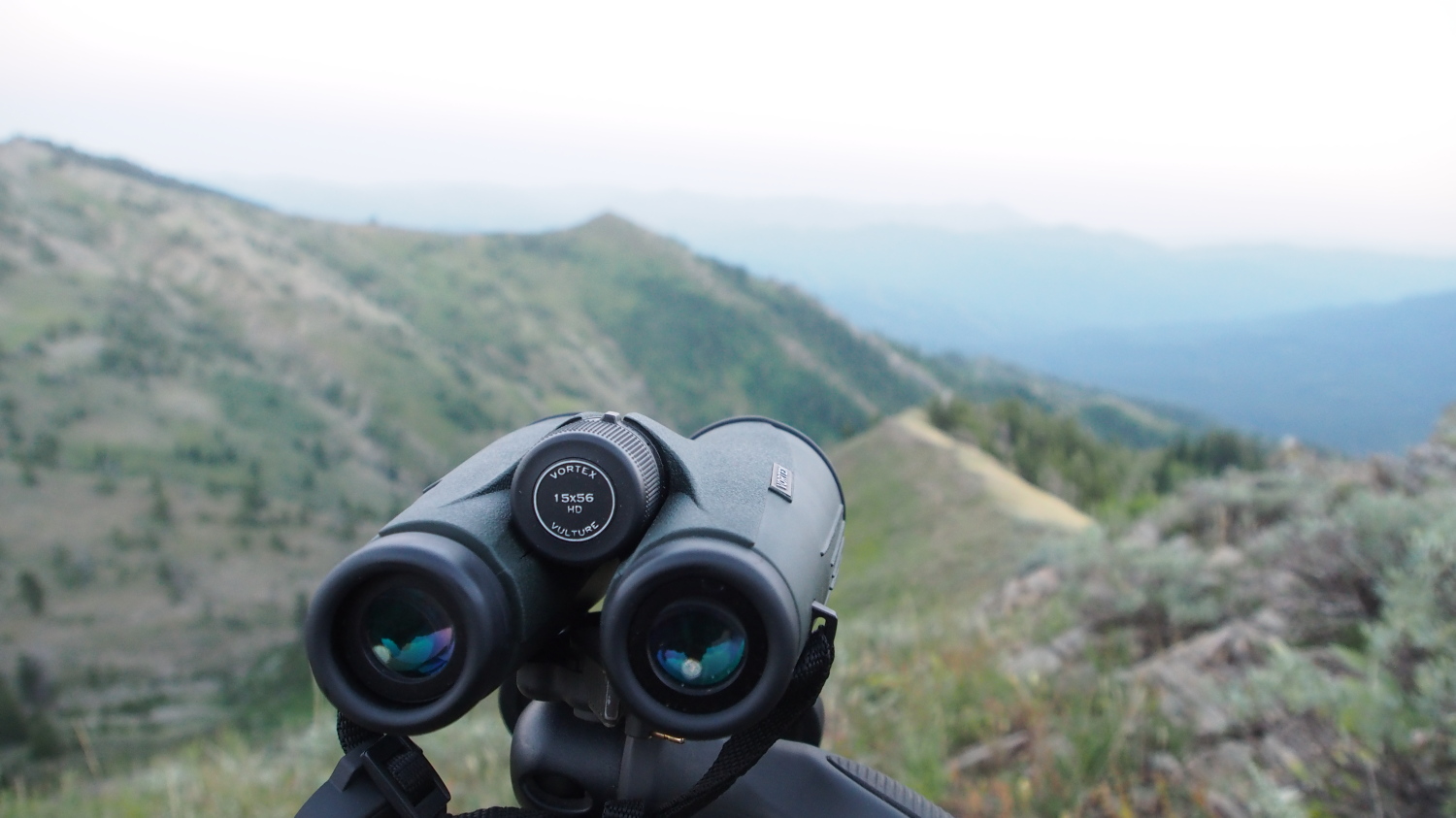
Eye Relief
Another important factor is eye relief, especially if you’re an eye-glass wearer. The whole idea behind tripod mounted binoculars is that the viewing image is better because you’re not touching the binoculars, introducing vibration. With lower power binoculars, vibration isn’t as noticable and you can steady them by pressing the eyepieces against your eye sockets. This reduces the amount of critical eye relief needed. With tripod binoculars, eye relief is more critical because you can’t be touching the binoculars and have a steady viewing image.
Vortex lists both models at 15mm and if memory serves me right, the Vultures and Kaibabs were neck-and-neck. I’d give them a good but not great rating in category. You can glass with both models without touching them.
If you’re an eye glass wearer, I recommend testing both models on a tripod in field conditions and not just in a window-less store to make sure you’re satisfied. If the dealer won’t guarantee a refund or at least let you do a simple test in the back parking lot, I’d recommend to continue shopping elsewhere until someone does.
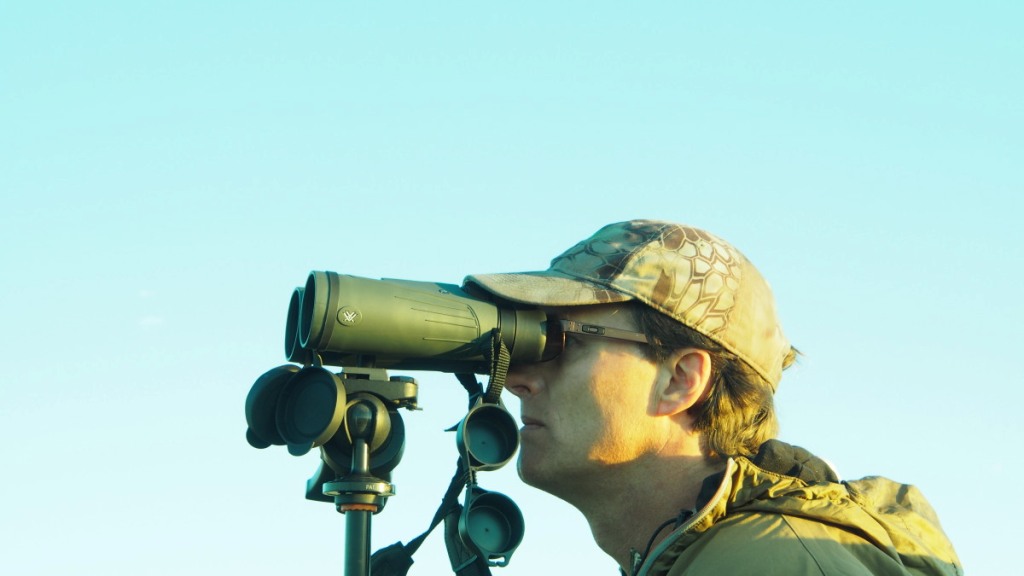
I was able to glass with eyeglasses on with both models, but I had to think to maintain a full circle. If Vortex could increase the eye relief by a small margin, a whole bunch of eye glass wearers would be happier.
Brightness
This is the high point of both models. The big 56 mm lenses allow plenty of light to reach the eye and challenged my 8×42 Swarovski ELs in both the first and last minutes of legal shooting light. Although I’m going from memory on the Vultures, they seemed to equal the Kaibabs and as I said above, I could glass outside of legal shooting light at reasonable yardages. I hand both models an A in category
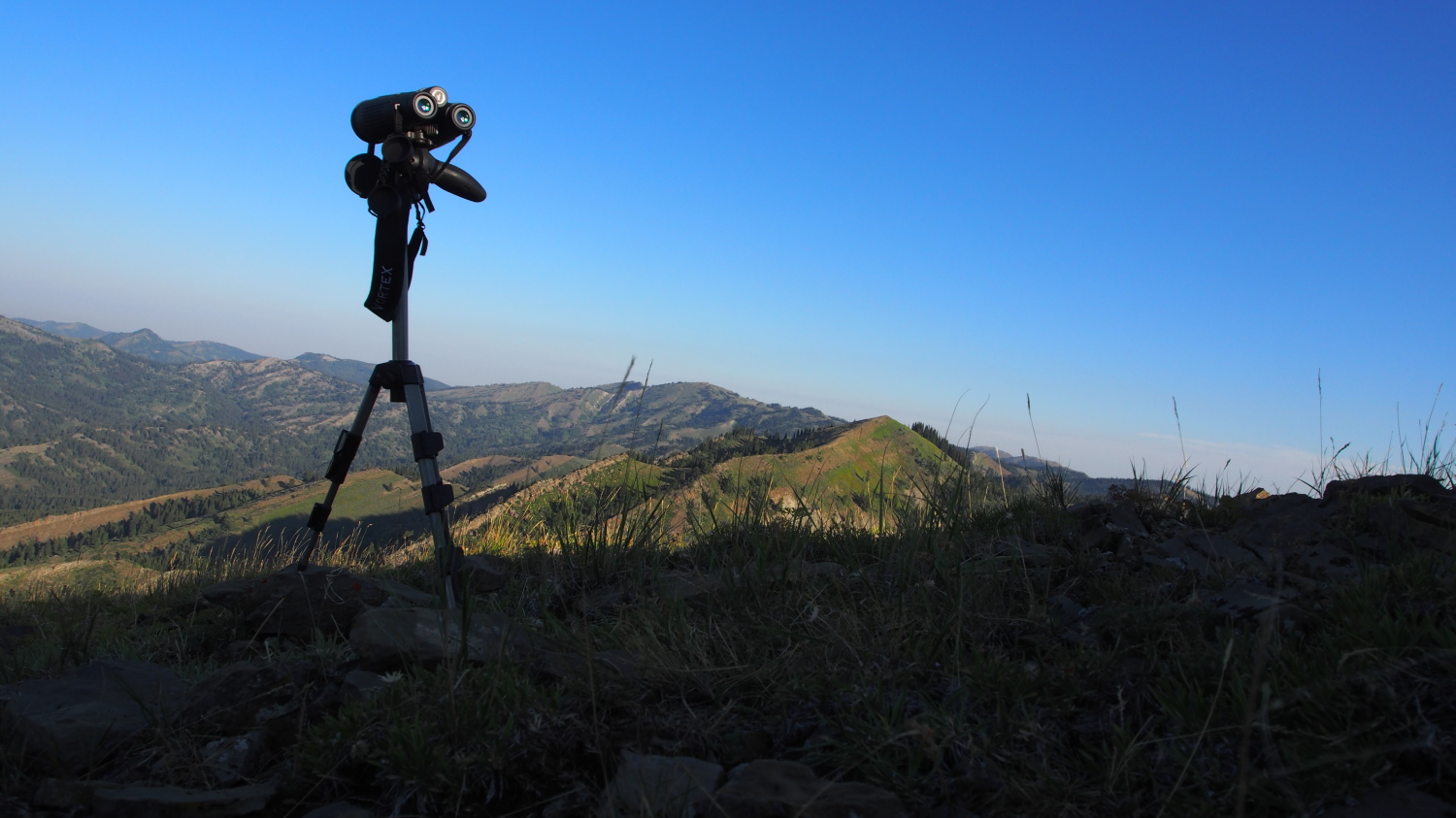
Durability
Between both models and two seasons, I probably hunted and scouted around 50 days. I found zero durability issues, even when I dropped the Kaibabs—eyepiece first—off a five-foot tripod. True durabilty to me means five plus seasons of normal use and obviously I don’t know yet if either model will reach that benchmark. I can confidently say, however, that both models are durable.
Temperature Range & Internal Fogging
I used the Vultures between freezing and 90 degrees and dry to raining; the Kaibabs between 8 below zero and 85 degrees and dry to snowing.
Typically if a problem is going to arise, it’s at very cold temperatures when focus knobs can become very stiff and/or internal fog can appear. I experienced neither.
Accessories:
Vortex includes certain accessories with each model, including
- Rainguard Eyepiece Cover (tethers to neck strap)
- Tethered objective lens covers
- Comfort neck strap
- Deluxe padded carry case
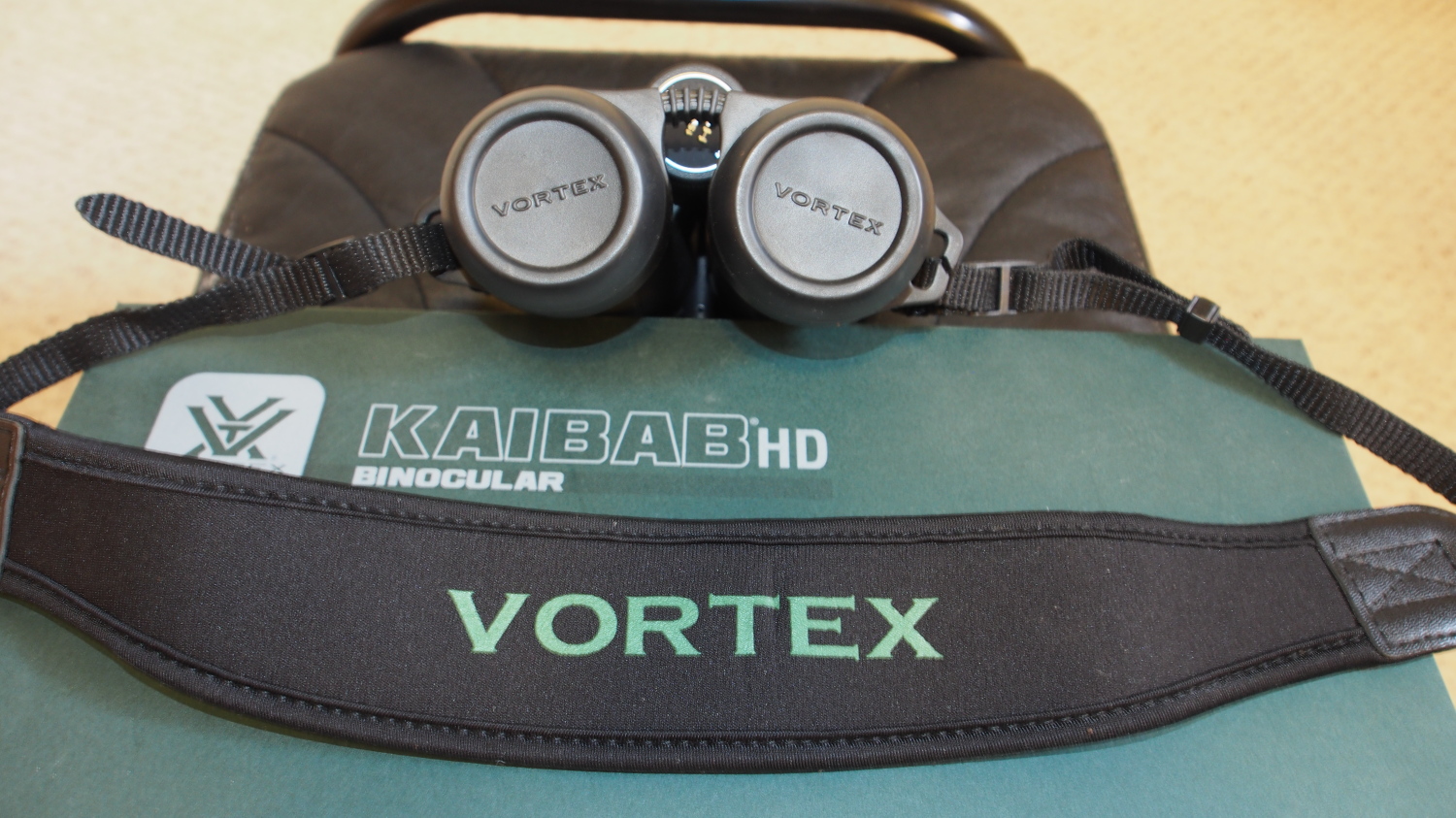
While most of us don’t think about binocular accessories, they’re very important and Vortex did well. Because 15x binoculars will usually reside in your pack until you need them, I consider the eyepiece and objective lens covers and bag essential. I never carry binoculars of any kind in a pack without at least lens covers for obvious reasons.
The padded carry case is well built and went everywhere my optics did. My Vultures’ case had several little pockets that were handy for storing a cleaning cloth and a tripod mount, but the Kaibabs’ bag didn’t have those pockets. I’m not sure if that was a change between years I tested both models but the pockets are preffered.
Even though I rarely carry a 15x binocular around my neck, the supplied neck straps were very comfortable and a nice addition.
The Kaibab includes the Uni-Daptor quick-release tripod adapter. While it’s definitely a quick release, it operates by gravity and you will inevitably knock your binoculars off the tripod. I knocked both my Vultures and Kaibabs off the tripods using the Uni-Daptor. I don’t swear much, but when expensive optics hit the ground, Jodi hides our kids.
Vortex offers a standard Binocular Tripod Mount ($24). While I didn’t test one, you could mount a quick-release plate to the 1/4-20 female adapter. A quick release option is always preferable if you’ll be running both a spotter and 15x binoculars. Big bucks are sometimes visible only for a few seconds.
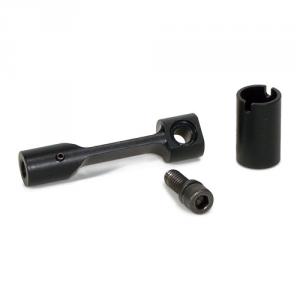
The Uni-Daptor included with the Kaibab and availabe to purchase with the Vulture ($40) isn’t reliable to hold your binoculars in place if you inadvertently kick your tripod, which you eventually will
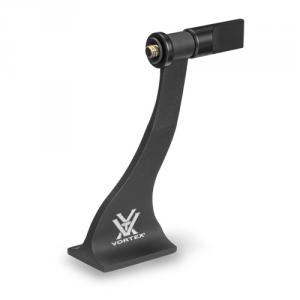
Vortex’s standard Binocular Tripod Mount ($24) is preferable over the Uni-Daptor, althouh a quick mount plate should be used with it
I split the difference and mounted a Manfrotto quick release plate to the threaded end of the Uni-Daptor. It was much more secure but still allowed me to switch optics quickly.
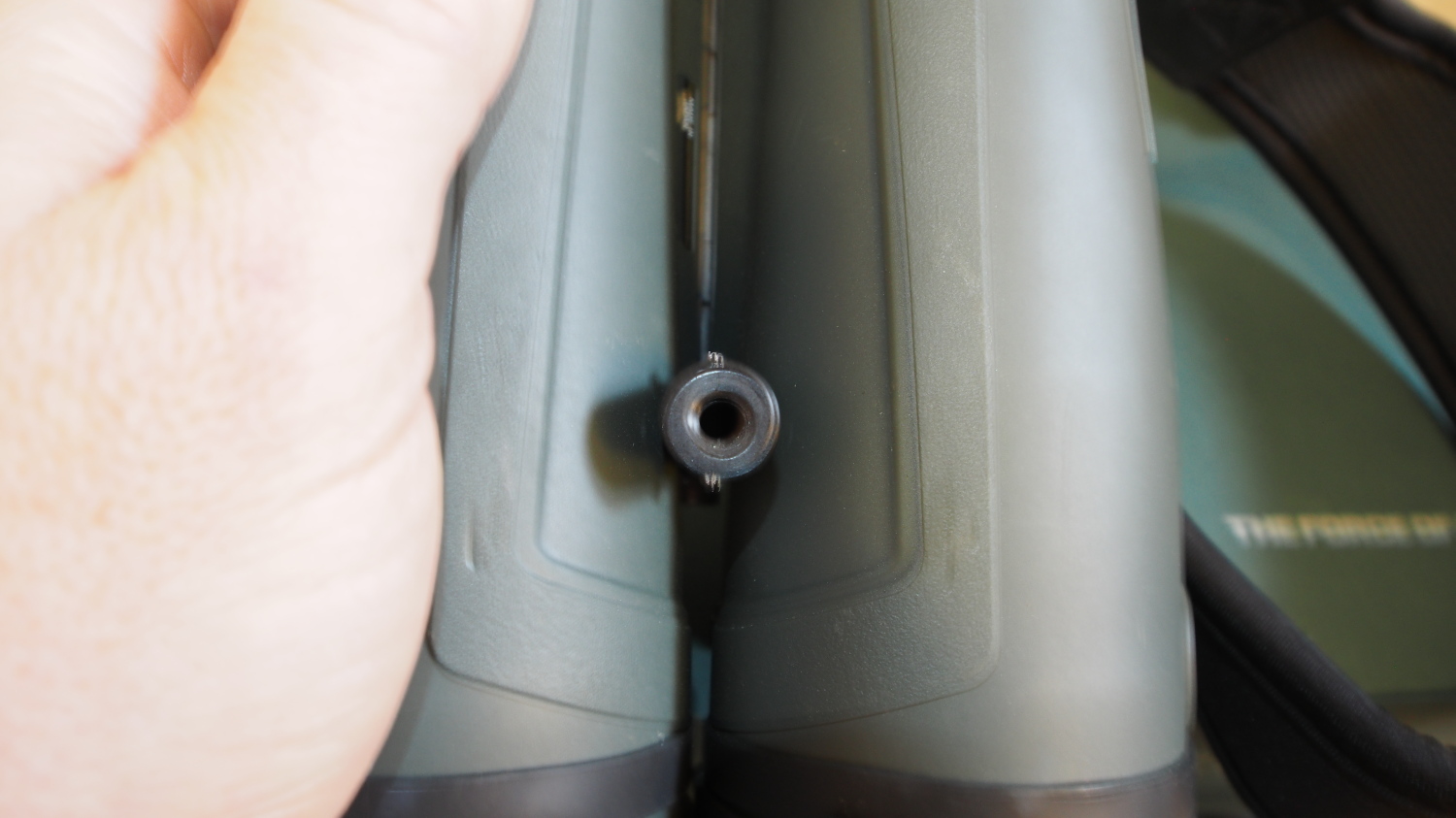
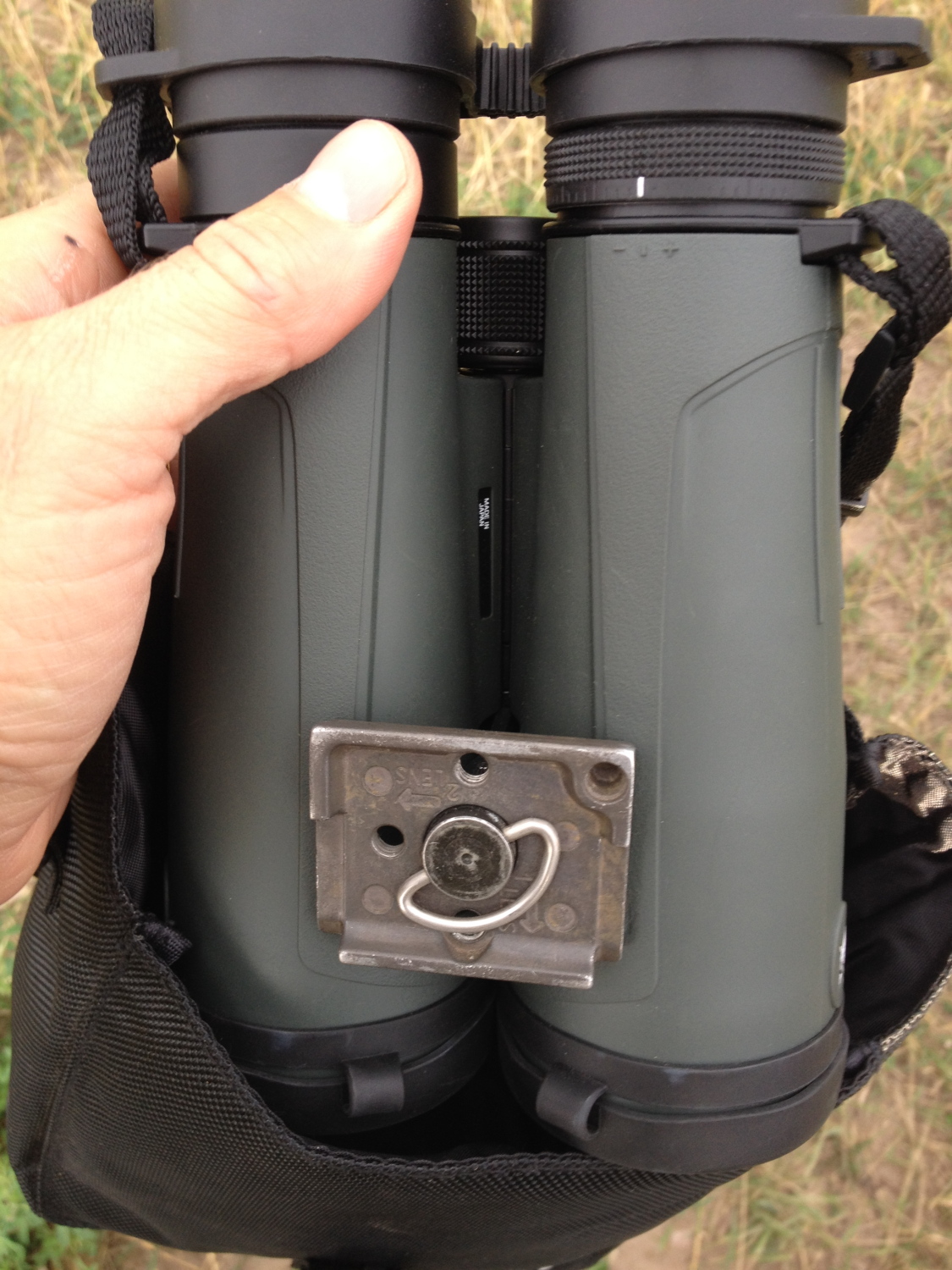
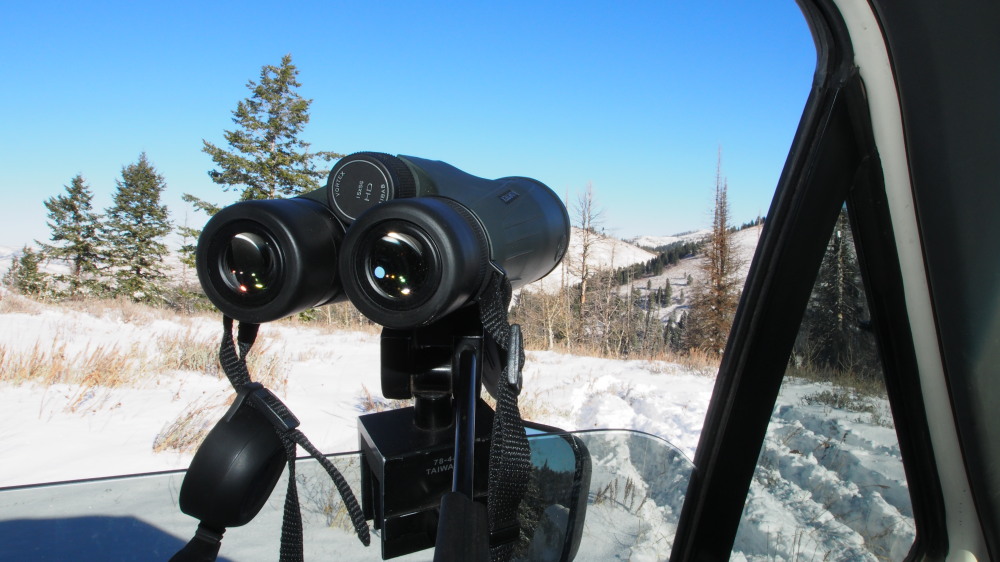
Summary
Vortex did well offering both the the Kaibab and the Vulture to hunters. If you’re serious about mule deer hunting, you need to have a pair of 15x in your optics toolbox. Both of Vortex’s offerings in 15x will improve your mule deer game and you probably won’t need a third job to afford them.
With Vortex’s world class warranty of repairing or replacing the product in the event of damage, no matter the cause, you can be confident in your purchase. The warranty is also transferable and is one reason these optics have a good resale value in the event you decide to sell them.
It should be clear from this review that like most optics, these too follow the axiom “buy the best you can afford.” However, if the Vulture HD 15×56 is all the budget allows, don’t think for a second you’re heading to the dance with the ugly step-sister. The Vultures will deliver what you need in the West and you’ll be a better hunter for using them. If you can afford the Kaibab HD 15×56, then buy them and never look back.
And if you’re still wondering how the Kaibab might stack up against Swarovski or Zeiss tripod binoculars (both of which I’ve used), I’ll answer that one by referring to another axiom in optics: “Paying a lot more does not mean you get a lot more performance.”
You can discuss this article or ask the author questions here
Rokslide sponsors BlackOvis has both models here; You can find both models on Cameraland’s website here
